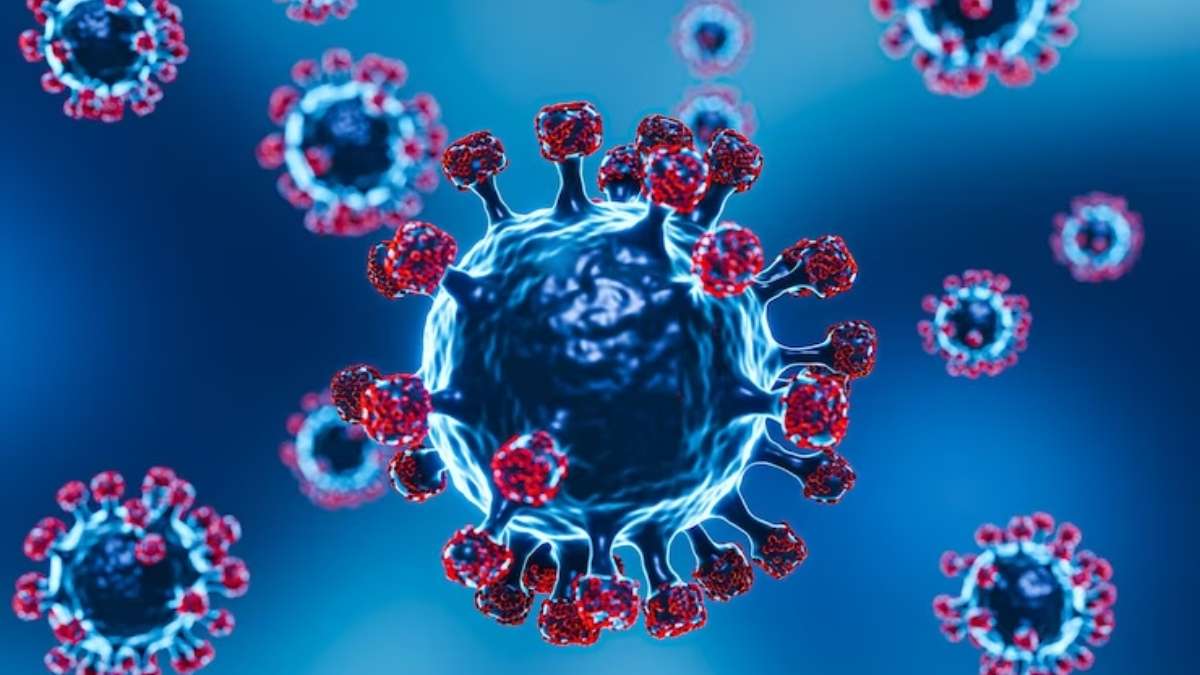COVID-19 variant BA.2.86 triples in new CDC estimates: Recent federal tracking indicates a notable surge in the occurrence of a COVID-19 variant in the United States. The BA.2.86 variant, previously considered uncommon, is projected to constitute nearly ten per cent of circulating viruses, as per the Center for Disease Control and Prevention’s recent Nowcast variant tracker update. Just two weeks ago, this variant accounted for 3% of cases. These estimates are based on the prevalence of different variants, an indication that BA.2.86 Variant Cases are surging.
Dr. Perry Halkitis, Dean of the Rutgers School of Public Health in New Jersey, highlighted the trend’s significance, stating, “The numbers matter less; the pattern is what matters. And it appears to be growing.”
At the same time, the WHO has elevated BA.2.86 and its subvariants to the status of a “variant of interest.” Additionally, there is an ongoing increase in flu hospitalizations in the United States.
BA.2.86’s Variant Cases Surge and Prevalence
In regions where testing laboratories have reported sufficient specimens, BA.2.86 stands out. Especially in the Northeast, accounting for 13.1% of cases in the New York and New Jersey area.
Monday’s data marks the first time that BA.2.86’s prevalence has escalated enough to be recognized as a distinct variant in the CDC’s estimates. Scientists had initially raised concerns about this highly mutated strain during the summer.
Previously, BA.2.86 was too infrequent to be individually distinguished and was combined with other BA.2 strains,” stated the CDC on Monday.
Prior to this update, health officials had indicated that the XBB variant and its closely linked descendants were responsible for the majority of new COVID-19 cases, such as the HV.1 and EG.5 variants, which currently dominate nationwide.
How Reliable are the CDC Estimates?
The CDC’s assessments of new COVID-19 variant BA.2.86’s prevalence come with considerable variability. According to the agency, anywhere from 4.8% to 15.2% of circulating SARS-CoV-2 might be attributed to BA.2.86.
Yet, the most recent estimate—8.8% as of November 25—nearly triples the proportion reported on November 11, which stood at 3.0% of new cases. Although the CDC typically releases variant estimates biweekly, last week’s publication was postponed until after the Thanksgiving holiday.
The agency cautioned about the reliability of early projections, especially given the dependence on observing growth patterns in a smaller number of sequences. This limitation becomes more pronounced as laboratory-based testing for SARS-CoV-2 has notably declined over time.
Furthermore, the World Health Organization recently elevated BA.2.86 and its descendants to the status of a “variant of interest” following an increase in cases linked to this strain.
WHO’s November 21 Risk Assessment of BA.2.86
According to the WHO’s November 21 risk assessment, early data on BA.2.86 suggests it doesn’t bring about more severe or distinct symptoms compared to previous strains. However, there’s been a significant uptick in recent reports of BA.2.86.
The CDC aligns with the WHO’s evaluation, stating that BA.2.86 currently poses a “low” public health risk. Additionally, the strain doesn’t seem to be causing surges in infections or hospitalizations in the United States. Dr. Brendan Jackson from the CDC mentioned in a call with health departments that while BA.2.86 might become the dominant variant due to its growth rate, it doesn’t seem to be a game-changer.
This assessment coincides with the CDC’s observation of a renewed increase in COVID-19 spread indicators across the U.S. as winter approaches. After a period of slowing or stable trends, figures such as emergency department visits are rising nationwide due to COVID-19. Nearly all regions in the country are witnessing at least slight increases, with the Midwest, covering states like Illinois, Indiana, Michigan, Minnesota, Ohio, and Wisconsin, experiencing some of the most significant rises nearing levels last seen in early January.
Symptoms of BA.2.86

Currently, it’s impossible to determine if infection with BA.2.86 results in different symptoms compared to other variants, as per the CDC. According to Pekosz, “The case numbers are just too small.”
The CDC’s risk assessment of BA.2.86 states that there’s “no evidence that this variant is causing more severe illness,” but as with any variant, this assessment might change as more data becomes available.
Common symptoms associated with other COVID-19 variants and subvariants include:
- Cough
- Sore throat
- Congestion
- Runny nose
- Sneezing
- Fatigue
- Headache
- Muscle aches
- Altered sense of smell
Based on the current understanding of BA.2.86, the CDC affirms that existing tests and medications used for treating COVID-19 “appear to be effective with this variant. As the BA.2.86 Variant Cases Surge, take care and keep safe.
What role did JN.1 Variant Play in the Surge of BA.2.86?

Since August, despite its numerous mutations, BA.2.86 hasn’t seemed to surpass XBB and its related strains. Even after several months of this highly mutated variant spreading, it has only accounted for a small portion of cases worldwide.
In recent weeks, scientists have been observing a sharp rise in a descendant of BA.2.86 known as JN.1, rapidly becoming the fastest-growing subvariant worldwide.
Europe, particularly France, has reported numerous cases linked to JN.1, contributing to the overall surge in BA.2.86 and its related strains. French authorities revealed that JN.1 largely drove the country’s rise in BA.2.86 infections, accounting for about 10% of sequences. Although initial investigations haven’t raised alarming concerns compared to other BA.2.86 infections, more thorough analyses are ongoing.
According to data gathered from the GISAID virus database in recent weeks, approximately one-third of reported COVID-19 variants in U.S. labs have been identified as JN.1.
Increase in JN.1 SARS-CoV-2 alongside BA.2.86
Presently, JN.1 stands as the most prevalent version of BA.2.86 in the U.S. The CDC anticipates a continued rise of BA.2.86 and its variations like JN.1 in SARS-CoV-2 genomic sequences,” mentioned CDC spokesperson Jasmine Reed in an email to CBS News.
While the CDC previously anticipated that tests and treatments for COVID-19 would remain effective against JN.1, this subvariant exhibits a spike protein change believed to contribute to its faster spread. Thus making BA.2.86 Variant Cases to Surge.
Initial findings suggest that this season’s COVID-19 vaccines, designed to target XBB variants, may also offer some level of protection against JN.1 due to its close relation to BA.2.86.
Compared to other existing or emerging variants, JN.1 showed the highest resistance to neutralizing antibodies generated by vaccination or previous XBB infections.
According to the authors of a draft study (not yet peer-reviewed), the extensive use of the updated XBB.1.5 monovalent vaccines might further enhance the growth advantage of JN.1 and related strains like BA.2.86 in the population. This scenario could potentially pose a threat to the newly authorized COVID-19 vaccines.
Is BA.2.86 Highly Contagious?
At present, there isn’t enough data to determine whether BA.2.86 is more transmissible than other variants, according to Pekosz. He emphasizes that drawing conclusions about transmissibility or disease severity based on the limited number of cases is impossible.
However, considering the genetic makeup of BA.2.86 and its spike protein mutations, Pekosz suggests that the variant might possess the ability to evade existing immunity to COVID-19. The CDC’s risk assessment echoes this, pointing out that BA.2.86 could potentially be more adept at causing infection among individuals who were previously infected with COVID-19 or received vaccinations.
“Most mutations observed in the spike protein are likely to impact the virus’s susceptibility to antibody binding and neutralization,” adds Pekosz.
In essence, BA.2.86 might evade immunity not only from prior infections or vaccinations but also from the upcoming autumn vaccine, as per Pekosz.
In a report released on October 27, the CDC emphasized the necessity for more “real-world human outcome data” to comprehensively comprehend the influence of pre-existing immunity concerning BA.2.86.
“This variant is a cause for significant scientific concern,” emphasizes Pekosz. “Understanding the variant’s transmissibility requires a more extensive collection of sequences and cases.”
Presently, laboratories are actively investigating how the immune system interacts with BA.2.86, specifically focusing on antibody neutralization, according to the CDC.



